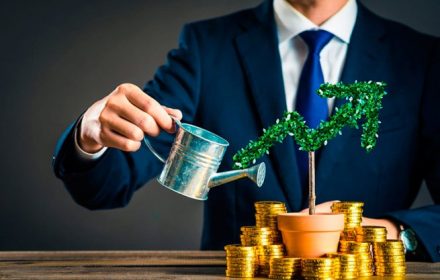Financial independence is not a dream from motivational books, but an economic state in which assets generate income that fully covers expenses without the need for constant work. According to Credit Suisse, only 8% of the world’s adult population reaches this level. The rest continue to exchange time for money, losing a resource that cannot be regained.
It is a balance of capital, income, and passive sources that create stability even with zero labor participation. Such a person does not just survive inflation — they manage it.
What is financial independence in simple terms
Financial independence is the ability to pay for housing, food, medical services, travel, and not depend on a salary. If monthly expenses are covered by interest, dividends, rent, or other passive income, that is when true freedom emerges.
For example, with a capital of $150,000 and an average annual return of 8%, you can earn $12,000 a year — up to $1,000 monthly. This is enough to not work for survival but work by choice.
The psychology of financial independence
Economic freedom is not just about money, but also about mindset. Discipline builds wealth faster than income. Stanford University research confirms that people with developed financial self-control are 38% more likely to achieve long-term goals.
The psychology of financial independence is based on refraining from impulsive spending and emotional decisions. Every ruble is given a task: to work, not disappear in a moment of pleasure.
Financial safety cushion — the first step
Material freedom is a system where the first brick is a safety cushion. The minimum amount is 6 months’ worth of expenses. With an income of $1,200, the reserve should be at least $7,200. These funds protect against crises, illnesses, job losses, and create confidence for further investments.
The safety cushion is kept in an account with instant access, not in deposits or stocks. It is not a tool for multiplication but for preservation.
How to achieve financial independence
The algorithm is based on four pillars:
- Budget analysis. Creating an expense table by categories: housing, food, transportation, loans, leisure. Optimizing excess reduces the burden on incomes.
- Savings formation. A minimum of 20% of profits is directed to savings monthly.
- Investing. Active use of capital through instruments that generate passive income.
- Monitoring and adjustment. Quarterly review of results and asset allocation.
Each stage strengthens the previous one, creating a solid material foundation capable of withstanding economic fluctuations. The sequence of actions transforms chaotic money flow into a manageable capital growth strategy.
Financial independence through investments
Investments are the basis of sustainable capital and the key to freedom from constant work. They allow turning accumulated funds into a source of stable income and prosperity growth.
Investing includes:
- Stocks — participation in company profits through dividends and stock value growth. The average return on S&P 500 indexes over 50 years is 9% annually.
- Real estate — renting brings stable income, especially in regions with high migration.
- Franchises — buying ready-made business models reduces risks and accelerates profitability.
- Cryptocurrencies — a high volatility and risk instrument, but with potential for multiple growth.
- Bonds — fixed earnings with minimal risks.
A well-diversified investment portfolio reduces the impact of market fluctuations and ensures financial stability. Over time, assets start working for the owner, forming a stable cash flow and self-sufficiency, allowing living without regular employment.
How to start investing from scratch
Financial independence is the result of constant investment even with small amounts. All you need is an initial capital of $100 and a brokerage account.
It is recommended to choose index funds, allocating investments across sectors: technology, energy, pharmaceuticals.
Even with monthly investments of $150 at 10% annual return, in 15 years, the capital will exceed $60,000.
The math of economic freedom is simple: capital × return × time = independence.
Mistakes hindering achieving financial independence
Financial autonomy is the result of avoiding typical traps. Most failures arise not from lack of money but from the absence of a management strategy. Ignorance of economic hygiene principles turns even a high income into a source of constant stress and dependence.
The most destructive ones include:
- Ignoring budget and expenses;
- Investing without risk analysis;
- Loans exceeding 30% of income;
- Lack of savings;
- Panic during market downturns;
- Lack of financial discipline.
Mistakes do not destroy the system if realization comes in time. The key is to adjust actions, not wait for the perfect moment.
Financial independence is about management, not luck
Economic freedom is the result of conscious control over finances, not the action of random luck. Incomes, expenses, debts, assets — are elements of a single ecosystem.
Understanding inflation and the role of passive income builds resilience to external changes. Dividends, interest, rent create a cash flow independent of economic storms. Discipline turns capital into a tool of freedom, and mindset into protection against illusions.
 en
en  ru
ru  de
de  ar
ar  es
es  nl
nl  hi
hi  fr
fr  it
it  pt
pt  el
el 



